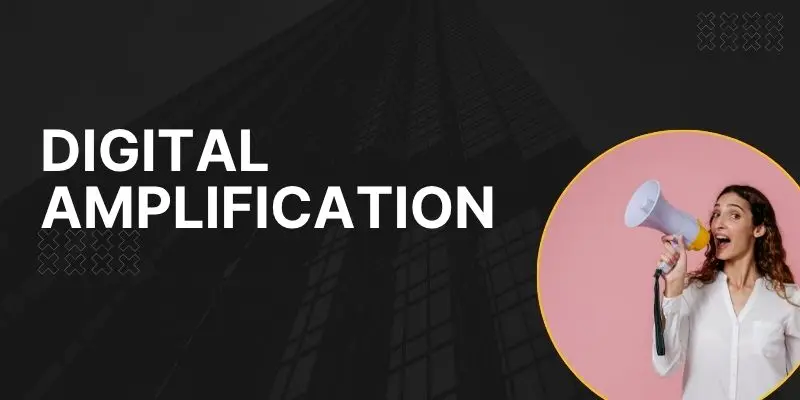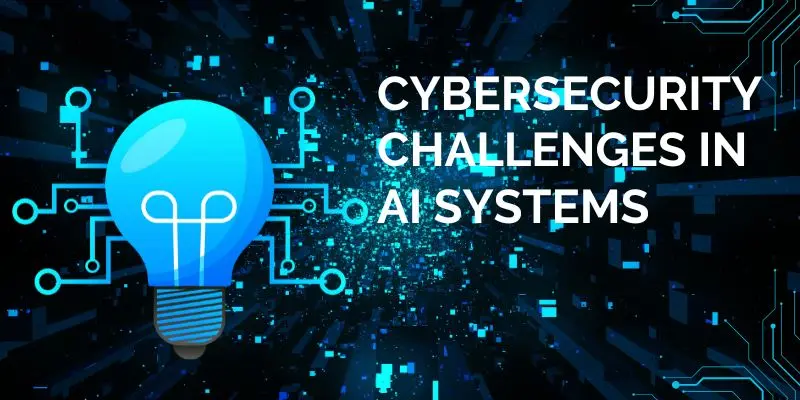Ethical AI for Businesses – 5 Smart Ways to Stay Fair, Safe & Future-Ready
Published: 29 Jun 2025
One of the biggest concerns when using Ethical AI for Businesses is its impact on the workforce. Many fear displacement, reducing or replacing human employees. But according to Professor Nien-hê Hsieh from the HBS Online Parlor Room podcast, this isn’t a new issue. Companies have always adapted to technologies, and in many cases, Ethical AI for Businesses is being used to help people work more efficiently and effectively, not replace them entirely. For example, automated machines like ATMs once disrupted the banking industry, but they also led to more branches, increasing demand for tellers and roles like IT support and customer service.
Looking ahead, the World Economic Forum predicts that by 2025, around 85 million jobs could be lost, but 97 million new jobs will emerge, particularly in areas requiring advanced technical competencies, soft skills, and leadership. Skills like creativity, emotional intelligence, relationship-building, and charisma are still unique to people and can’t be replaced by generative AI tools. As organizations continue implementing Ethical AI for Businesses in their operations, they must focus on ethics, corporate accountability, and building an ethical culture. In the digital age, Ethical AI for Businesses is key to long-term success.
1. Digital Amplification
Understanding how AI drives digital amplification is crucial for any business using it in daily operations. With AI enhancing the reach and influence of online content, its algorithms can prioritize certain information, shape public opinion, and amplify specific voices.

For example, a news organization may use AI to recommend articles to readers, but if the system always suggests the same types of stories, it grabs more attention, more clicks, and may greatly shape how people think. This phenomenon raises ethical concerns about fairness, transparency, and the spread of misinformation.
I first realized this while working on a content project where AI-driven tools pushed similar articles again and again. Later, in Essentials, Iansiti showed how Wikipedia, as an online encyclopedia, acts as a great example of how communities can counteract bias. The platform allows users to post, edit, and challenge opposing sides of an argument, improving one another’s work and aiming for truth. It’s a wonderful testament to the power of people policing themselves and becoming better. As individual editors react to feedback, their bias reduces measurably over time. In the workplace, we can mimic this model by encouraging diverse participation, thoughtful data collection, open dialogue, and regular reviews of AI systems to ensure balanced decision-making.
2. Algorithmic Bias
In today’s fast-moving world, algorithms have become the backbone of how AI helps companies streamline and optimize their business operations. But while they offer speed and efficiency, they can also introduce bias that negatively impacts both the organization and its employees.

This kind of algorithmic issue, called systematic discrimination, often arises when AI decision-making is shaped by prejudiced data. I once saw a hiring tool that used AI to review applicants’ resumes based on past success, but it unintentionally preferred certain profiles, ignoring people from diverse backgrounds.
For example, if your company relies on AI to quickly identify qualified candidates, it might favor those that match outdated criteria, like thinking only men work in finance or nurses must be female. These unfair outcomes, such as discriminatory hiring, unequal access to resources, or workplace bias, hurt both trust and growth. That’s why it’s vital to audit and test your AI regularly, ensure it’s built on diverse data sets, and include a team with different perspectives in the development and review process. As Iansiti said in AI Essentials for Business, your AI must do the legal and ethical things, not just the fast ones. Creating a culture of inclusivity and transparency will help promote fairness across your applications.
3. Cybersecurity Challenges in AI Systems
Cybersecurity is a major ethical concern for many AI-driven firms today, especially as these smart systems often handle highly sensitive data. From my own experience advising organizations, one common mistake I see is underestimating how desirable these systems are as targets for cyberattacks.

Whether it’s phishing, malware, or ransomware, these online threats are constantly evolving – cybercriminals may disguise themselves as a legitimate organization to trick someone into revealing their personal or financial details. Even Windows 12 security features are being pushed to adapt rapidly, as 85 percent of cybersecurity leaders, citing recent attacks, say they were caused by bad actors using AI.
To protect against these growing threats, businesses must invest in robust measures tailored to AI. That means securing systems with updated software, enabling multi-factor authentication, and training employees to recognize scams like phishing. In the KnowBe4 report, 86 percent of firms saw a drop in risk after one year of awareness sessions. From healthcare meeting HIPAA rules to retail firms guarding customer payment info, every industry must address these issues carefully. As Iansiti says in AI Essentials for Business, “Don’t keep what you don’t need” – minimizing storage reduces the risk of a catastrophic breach and protects both your reputation and the people you serve.
4. Responsible Data Privacy in AI Systems
As companies bring AI into their operations, privacy becomes a top ethical focus. Businesses often rely on collecting, storing, and using huge amounts of employee data, both personal and professional, which systems must analyze. But if that information isn’t well protected, it can lead to unauthorized access, violations, and serious misuse. In today’s digital, increasingly connected economy, these concerns aren’t just technical – they’re moral obligations to people’s trust.
I’ve seen firsthand how a lack of transparent tactics can damage a company’s reputation. Leaders need to establish and communicate clear usage policies, especially as cybersecurity and privacy become tightly tied together. At my previous workplace, regular reviewing and updating of data practices helped us avoid problems with rogue agents trying to access our networks from the outside. Following advice from experts like Iansiti in *AI Essentials for *Business, we built a team to implement strong measures that kept our system secure and private – and more importantly, helped us build long-term trust across the organization.
5. Inclusive Technology Use in the Workplace
Inclusion is a vital part of any modern business, and as AI continues to increase, we must ensure it doesn’t widen the digital divide. Many industries are still struggling to leverage AI tools, especially those in manufacturing, brick-and-mortar retail, or other non-manufacturing sectors. These areas often rely on repeated tasks, which AI and algorithms can now do. This has led to jobs in those sectors stalling while more digital economy roles grow slowly but steadily.
From my experience helping businesses with technology deployment, I’ve seen how accepting and integrating diverse groups into decision-making processes brings stronger results. We need to invest in training, resources, and roles that are at risk of being left behind, especially as retailers shift toward personalized marketing, inventory management, and automated customer experiences. The balance between tech and human effort can be achieved by fostering an equitable environment, encouraging human interactions, and proactively addressing AI-related gaps. This creates more opportunities for individuals across all sectors to thrive in a fair and ethical AI-powered future.
Conclusion
So, guys, in this article, we’ve covered Ethical AI for businesses in detail. From my own experience, starting small – like reviewing your current AI tools for bias or updating your privacy policies—can go a long way in building trust. If you’re serious about using AI responsibly, take the next step: audit your systems, train your team, and commit to ethical innovation today.
FAQs
Ethical AI means using artificial intelligence in a way that is fair, honest, and respects people’s rights. In business, this includes avoiding bias, protecting user data, and being transparent about how AI is used. It’s about doing the right thing while using smart technology.
Yes, businesses use different ethical AI types like transparent AI, fairness-focused AI, and privacy-protecting AI. Each one focuses on a specific value like making AI decisions explainable or avoiding unfair outcomes. These types help businesses build trust and reduce risks.
They are similar but not exactly the same. Responsible AI includes ethical AI but also covers legal and safety concerns like accountability and long-term effects. Ethical AI focuses more on doing what’s morally right.
You can start by checking if your AI tools respect privacy, avoid bias, and explain decisions clearly. If your company regularly tests AI systems and includes diverse opinions in development, that’s a good sign. Also, ethical training for teams is important.
Small businesses can and should use ethical AI. Even using basic tools responsibly – like avoiding biased data or protecting customer info – counts. You don’t need a huge budget to be ethical, just good practices.
Bias-free AI tries to remove unfair advantages or disadvantages from the data. Fairness AI goes further to make sure the outcomes benefit all users equally. Both are part of ethical AI, but fairness also looks at results, not just input.
They’re closely related. Explainable AI means the system’s decisions can be understood by people. Transparent AI means both how it works and why it makes decisions are open and clear to users.
AI systems often handle sensitive personal and financial data. Privacy-focused AI ensures that this data is kept safe, used properly, and not shared without permission. It also helps companies follow data laws and keep customer trust.
Not at all – ethical AI can actually boost growth. It helps avoid legal problems, improves customer relationships, and builds a better brand image. While it may need more careful setup, it’s worth it long-term.
Start by auditing your current AI tools for bias, lack of privacy, or unclear decisions. Then, retrain the AI with better data, involve a diverse team, and add transparency features. You can also bring in external experts for guidance.

- Be Respectful
- Stay Relevant
- Stay Positive
- True Feedback
- Encourage Discussion
- Avoid Spamming
- No Fake News
- Don't Copy-Paste
- No Personal Attacks

- Be Respectful
- Stay Relevant
- Stay Positive
- True Feedback
- Encourage Discussion
- Avoid Spamming
- No Fake News
- Don't Copy-Paste
- No Personal Attacks





